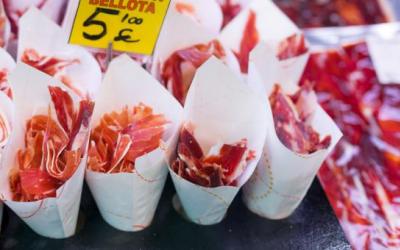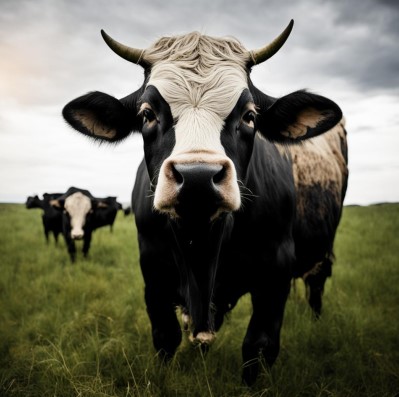Challenges and prospects for the Brazilian cattle market in 2024

The animal protein market scenario for the next year remains shrouded in volatility, driven by factors such as climate issues, geopolitics, HEALTH risks and consumer purchasing power. Trade barriers continue to be a critical issue for the EXPORT sector given the current low predictability.
A significant increase in the slaughter of females during this year, combined with an increase in the number of males, resulted in supply exceeding demand. This condition caused a record devaluation of live cattle prices in September 2023, reaching a 30% cumulative decline for the year, setting a record for the period. Lower prices, both wholesale and retail, contributed to increased competitiveness of beef relative to chicken and pork. Per capita consumption is expected to rebound after reaching one of its lowest levels in history the previous year. In 2024 , female slaughter is expected to remain high in the first half of the year, further disrupting the balance between supply and demand. Internationally, forecasts point to growing opportunities for Brazil, with supplies expected to recover from contractions expected this year.
On the supply side, cow slaughter volumes are expected to remain strong throughout the year, particularly in the first six months. However, female participation in slaughter tends to slow down somewhat from this year, which saw the second highest level of 48.9% recorded in March 2023, only surpassed by February 2014 (49.1%). This signals that calf prices should begin to recover after reaching the lowest point in the herd cycle, indicating a possible reversal of the cycle as breeders retain more females to increase calf production.
Climate issues associated with El Niño are also worthy of attention in the first quarter of next year. Projections for above-average rainfall in the Southern region, which accounts for about 10% of the cattle population , are causing concern among livestock farmers during this period.
The Central West region, which contains about 33% of the nation's cattle population, is expected to experience erratic rainfall, although with a low chance of a significant drop compared to 2023. The distribution of this precipitation will also be critical as it may have different impacts in different areas.
In regions where rainfall is sufficient, pasture quality will allow livestock to be fed efficiently, increasing the bargaining power of some livestock producers over slaughterhouses. The ability to keep livestock on pasture longer should limit the drop in livestock prices that is common in the early months of the year and provide greater stability. Demand for females from slaughterhouses due to lower prices compared to males is expected to continue in some regions until 2024.
After recording growth of 3.1% in 2021 and achieving the highest figure on record, data for 2022 shows a new record increase in the cattle population of 4.3%. This movement, caused by the preservation of females, contributed to an increase in the number of young animals.
Rabobank forecasts new record beef production growth of 1-2% in 2024, driven by international demand, expectations of increased Chinese imports and a rebound in domestic consumption, which should improve by 0.5-1.5% from 2023.
In terms of exports, CHINA remains the largest export destination , accounting for about 52% of total exports from January to September 2023, followed by the United States and Hong Kong. Chile gained importance thanks to a significant increase in import volumes of 32% during the year. Forecasts for 2024 show that an increase in Chinese beef imports of about 5% compared to 2023 will continue to provide opportunities for the export sector. However, greater competitiveness is expected, especially with New Zealand and Australia forecasting production growth of 4% in 2024 year.
Read together with it:
- Bloomberg узнал о плане G7 значительно ужесточить санкции против РоссииНовый пакет санкций будет включать меры, в частности, против энергетики, финансов и военной промышленности, а также крупнейших нефтяных компаний России. Разработку пакета G7 планирует завершить в октябре, выяснил BLOOMBERG Страны «Большой семерки» (G7) приближаются к соглашению о значительном ужесточении санкций в отношении России, сообщает агентство Bloomberg со ссылкой на проект заявления. «Мы с...
- Мировой рынок органических и натуральных продуктов вырастет до $84 млрд к 2033 годуПараллельно в России наблюдается увеличение интереса к высокотехнологичным пищевым продуктам, которые создаются с использованием функциональных добавок — стабилизаторов, эмульгаторов и натуральных консервантов. Как показывают опросы, 70% россиян готовы переплачивать за качество, причем 60% потребителей внимательно изучают состав перед покупкой. Растущий спрос подтверждается и данными по промышленн...
- Проблемы "Токаревской птицефабрики": Новый иск на 64,8 млн рублейДело рассматривается в арбитражном суде Тамбовской области, дата следующего заседания пока не назначена. Это не единственная проблема предприятия: ранее было принято решение о взыскании 104 миллионов рублей от поставщика зерна и есть другие незавершенные иски. "Токаревская птицефабрика" является одним из крупнейших производителей мяса птицы и яиц в России, с выручкой 44,4 миллиарда рублей за 2.......
- США могут стать вторым по величине рынком сбыта парагвайской говядиныДоктор Хосе Карлос Мартин Камперчиоли, президент Национальной службы здоровья и качества животных (Senacsa), рассказал о производстве мяса на экспорт в нашей стране. Ожидая окончательного заявления от Тайваня, он сообщил, что в настоящее время существует 101 рынок, заявив, что к 2025 году США станут для страны вторым по значимости рынком. Он пояснил, что внутренний рынок несколько напряжен из-за с...





























































